Journal of Water Resource and Protection
Vol.2 No.5(2010), Article ID:1787,11 pages DOI:10.4236/jwarp.2010.25048
Assessment of the Effects of Poultry Litter on Surface Runoff Water Quality from Agricultural Lands
1Plant and Soil Sciences, College of Agricultural and Natural Resources, University of Delaware, Newark, USA
2Bioresources Engineering, College of Agricultural and Natural Resources, University of Delaware, Newark, USA
E-mail: sdutta@udel.edu
Received November 14, 2009; revised December 16, 2009; accepted April 2, 2010
Keywords: Poultry litter, surface runoff, water quality, tillage, best management practices, nutrients, trace elements
ABSTRACT
The use of pelletized poultry litter (PPL) as a substitute for inorganic fertilizers is increasingly being encouraged in states like Delaware which have a considerable surplus of poultry litter. However, we know very little about the impacts of PPL on runoff water quality and whether it is an environmentally-sound and sustainable alternative to inorganic fertilizer. To address these questions we compared the exports of nutrients (NH4-N, NO3-N and PO4-P) and trace elements (As, Cu, and Zn) in surface runoff from agricultural plots receiving PPL, raw poultry litter (RPL), urea and no-fertilizer (control) treatments. The study was conducted on agricultural land located in Middletown, Delaware with corn as the cover crop. The experimental plots were 5 m wide and 12 m long with reduced tillage and no-tillage management practices. Sampling was conducted for six natural rainfall events from April through August 2008. Nutrient (NH4-N, NO3-N and PO4-P) exports from plots receiving PPL were less than those with urea or raw litter applications. While exports of trace elements from the PPL treatment exceeded those from urea, they were much lower than the corresponding exports from the RPL treatments. Mass exports of nutrients and trace elements were correlated with event size (rainfall amount) but were not correlated with timing of event (days since litter application). Results from this study suggest that the use of PPL in combination with no-tillage may provide an environmentally safe alternative to synthetic fertilizers.
1. Introduction
Increasing costs of synthetic fertilizers has resulted in many farmers adopting animal manure and poultry litter/wastes as substitutes for synthetic fertilizers. This is especially true for states like Delaware that have a large surplus of poultry waste associated with a large poultry industry. The use of poultry litter as an alternative to commercial fertilizers is promising as it simultaneously addresses the issues of rising costs of inorganic fertilizer and disposal of waste from animal operations. To encourage the use of poultry litter as fertilizer, pelletizing plants that convert raw poultry litter (RPL) to a dry, pelletized form, are also being introduced. Pelletized poultry litter (PPL) is much more amenable to transport and land-application than its raw counterpart. Howevercurrently we know very little about how the application of poultry litter in either form on agricultural land impacts runoff water quality. Non-point source pollution from agricultural land is an existing concern and we must ensure that large-scale adoption of animal wastes as fertilizer on croplands does not worsen the problem. In addition to nitrogen and phosphorus, poultry litter also contains trace elements like arsenic (As), copper (Cu), and zinc (Zn) which are often added to poultry feed to increase weight, improve feed efficiency and egg production, and prevent diseases [1,2]. Thus, to evaluate the use of raw and pelletized poultry litter as environmentally-safe alternatives to synthetic fertilizers it is critical to investigate the potential for exports of nutrients and trace elements in runoff from such applications.
To date, most of the studies that have investigatedpoultry litter have focused on runoff water quality from pasture lands [3-7]. Haggard et al. [4] evaluated nutrient loss in surface runoff from fescue-Bermuda grassclover plots in Fayetteville, Arkansas by applying six different forms of poultry manures including raw and pelletized litter. They found that the runoff concentrations of ammonium-N (NH4-N), nitrate-N (NO3-N), and soluble reactive P (SRP) were higher for plots receiving raw poultry litter versus those receiving pelletized litter. Ammonium-N, NO3-N, and SRP concentrations in surface runoff corresponding to pelletized litter were 15.9, 0.4 and 12 mg/L, respectively while those for raw litter were 22, 7.3 and 15.1 mg/L, respectively. The mass exports of NH4-N were also greater from the plots receiving RPL (15 g/ha) versus those receiving PPL (7 g/ha). In another study conducted on fescue grass plots with simulated rainfall conditions, Edwards and Daniel [3] reported that the concentrations of NH4-N in runoff water were nearly doubled (66 to 114.3 mg/L) when the application rate of poultry litter was doubled (218 to 435 kg N/ha). Similarly, concentrations of NO3-N and total P (TP) also increased when the application rate of poultry litter was doubled [3]. Concentrations of trace elements (Cu and Zn) in runoff water have also been found to increase following applications of poultry litter [7].
In comparison to pasture, little information is available on the exports and concentrations of nutrients and trace elements from croplands receiving raw or pelletized litter applications. We especially know little about how tillage practices impact the export potential of nutrients and trace elements from fields receiving litter application. Furthermore, most previous studies have been conducted under simulated rainfall conditions which typically use single rainfall intensity and only a few pouring events; very little data is available for natural rainfall events. Our interest in this study was to evaluate the exports of nutrients (NH4-N, NO3-N and PO4-P) and trace elements (As, Cu, and Zn) in surface runoff from agricultural plots receiving PPL, RPL, and urea. Sampling was performed for six natural rainfall events occurring over a four month period in AprilAugust, 2008. In addition to nutrients and trace elements, mass exports of dissolved organic carbon (DOC) in surface runoff were also evaluated to investigate the influence of DOC on the transport and exports of trace elements. Specific questions that were addressed included: How do nutrient and trace element exports in surface runoff from plots receiving PPL and RPL compare against those receiving urea applications? How does the tillage practice (reduced versus no-tillage) influence the exports? What is the impact of individual storm events (amount and timing after litter application) on the exports of nutrients and trace elements?
2. Materials and Methods
2.1. Site Description and Experimental Design
The study was conducted on experimental plots located on cropland adjacent to the campus of St. Andrew’s School in Middletown, New Castle County, Delaware (39.45° N, 75.69° W). The experimental plots were aligned North-South and were located on Matapeake silt-loam soil with a slope gradient of 2-5%. The soil is classified as fine-silty, mixed, mesic typic hapludults [8]. Average annual precipitation for the county is 1130 mm with highest monthly precipitation typically occurring in August [9]. Precipitation during the summer is associated with low-pressure systems from the south which produce high-intensity convective storm events. Average annual temperature is 12℃ (54℉) with maximum temperatures typically occurring during the latter part of July. Ten experimental plots (5 m wide × 12 m long) with five each in reduced and no-tillage treatments were established. The experimental design was a 5 × 2 factorial arranged in a randomized block design. Fertilizer applications for each treatment block (reduced or no-tillage) included—PPL, RPL (high and moderate rate), urea, and no-fertilizer (control). The “reduced tillage” plots in our experiment were conventionally tilled until September 2007; however in 2008 the farmer switched to no-tillage practice for these plots. Thus, since these plots were in a transition phase from conventional tillage to no-tillage we classified them as reduced tillage. In comparison, the no-tillage plots had not been tilled for a period of more than three years. PPL and urea were applied to provide 252 kg/ha of plant available nitrogen which resulted in an application rate of 12.6 Mg/ha for PPL and 0.547 Mg/ha for urea. Raw poultry litter was applied at moderate (RPL1 = 23 Mg/ha) and high rates (RPL2 = 35 Mg/ha). Urea and all litter applications occurred during the third week of April 2008. The crop on the plots was corn with planting occurring in the second week of April, 2008.
2.2. Sampling and Analysis
The experimental plots were enclosed with plastic edges to constrain surface runoff within the plots. A sampling bucket (37.85 L) fitted with PVC pipes was established in a pit at the lower end of each plot to collect surface runoff from the plots. Samples were collected for six rainfall events over the April-August, 2008 study period (Table 1 and Figure 1). Rainfall and weather data were available from a climate station located in Middletown, Delaware [10]. The amount of surface runoff collected in the bucket was recorded following each event. Prior to sampling, the water in the bucket was thoroughly stirred to get a representative sample of runoff water. After col-

Table 1. Amounts, dates, and days since litter application for the monitored six natural rainfall events.
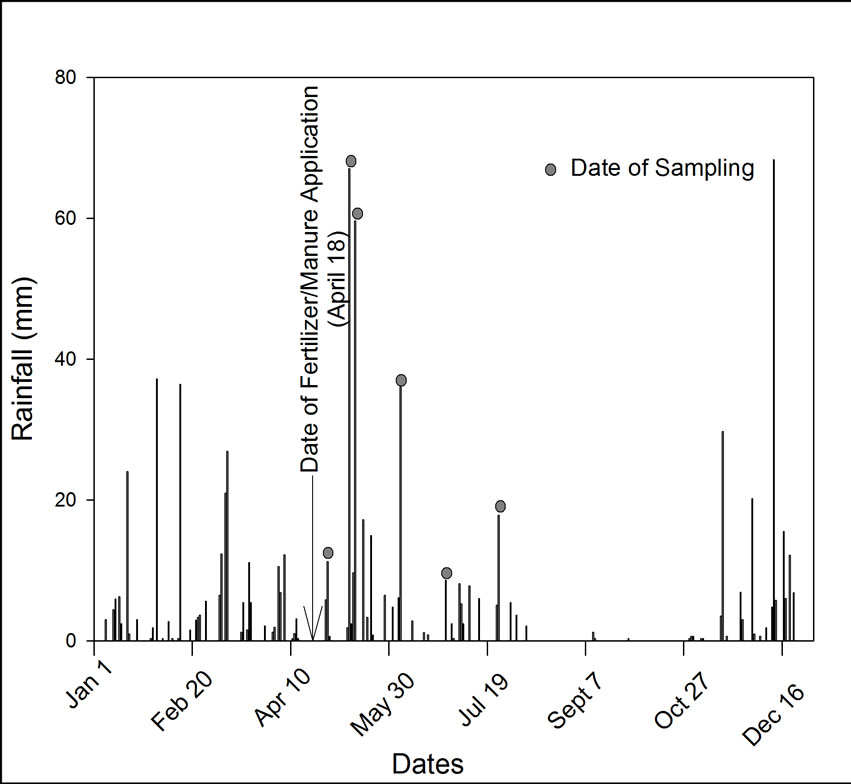
Figure 1. Rainfall amounts for storm events in the year 2008. Events sampled in this study during April-August 2008 are indicated by filled circles.
lection of samples, the sampling buckets were then emptied and cleaned. Runoff samples were collected in 250 mL HDPE bottles for each bucket. Runoff water were then filtered through 0.45 µm membrane filter paper (Millipore Corp., Billerica, MA), and stored at 4℃ until analyses. Prior to storage, water samples were also analyzed for pH and total dissolved solids (TDS) at 25℃with an Accumet AP85 pH/Conductivity/TDS Meter (Fisher Scientific Inc. Hampton, NH). Water samples were analyzed for: ammonium nitrogen (NH4-N), nitrate nitrogen (NO3-N), phosphate phosphorous (PO4-P), arsenic (As), copper (Cu), zinc (Zn) and dissolved organic carbon (DOC). Concentrations of NH4-N and NO3-N were determined using BRAN + LUEBBE method no. US 696D-82X while PO4-P concentrations were determined by colorimetric method (BRAN + LUEBBE method no. US 696A-82W). The trace element concentrations were determined by ICP-AES (HP 4500, Agilent Technologies, Santa Clara, CA). Concentrations for DOC were determined using a Tekmar-Dohrmann Phoenix 8000 total organic carbon analyzer.
Mass exports of nutrients and trace elements in surface runoff were computed by multiplying the concentrations of nutrients and trace elements by the runoff volumes for each of the six events. The t-test was used to determine whether mass exports were significantly different at α level of 10% (p ≤ 0.10). Flow-weighted concentrations of nutrients and trace elements for each treatment were computed by dividing the total of mass exports for the six events with the corresponding total of runoff water volumes. The influence of storm events on mass exports was determined by calculating the correlations between mass exports and rainfall amounts using the F-test. Correlations were also computed between mass exports and time of occurrence of event (days since application of litter). Data on DOC was available for four of the six storm events. Correlations between mass exports of DOC and nutrients as well as trace elements were also computed. All statistical analyses were performed using Origin Software (version 8E, OriginLab, Inc.).
To establish baseline plot concentrations prior to litter and fertilizer applications, surface soil samples (0-5 cm) from the plots were analyzed for nutrients and trace elements. In addition, samples of PPL and RPL were also analyzed for nutrient and trace element contents. Soil samples were collected with sampling auger and air dried in the laboratory. Both soil and litter samples were digested and the extracts were analyzed following the procedures used for water analysis (mentioned above). PPL and RPL had higher concentrations of trace elements compared to urea (Table 2). Concentrations of nutrients (NH4-N, NO3-N and PO4-P) and trace elements (As, Cu and Zn) did not differ significantly among the soil samples from the experimental plots (Table 3).
3. Results
3.1. Surface Runoff Volumes, pH and TDS across the Treatments
Rainfall amounts for the six events are presented in Table 1 with the corresponding runoff volumes, pH and TDS reported in Table 4. The surface runoff volumes were not significantly different (p ≥ 0.1, Table 4) among the treatments. We also did not find any significant difference (p ≥ 0.1) between the surface runoff volumes from reduced versus no-tillage plots. Runoff volumes were, however, significantly correlated (p ≤ 0.10, Table 5) with rainfall amounts. The pH values for surface runoff also did not differ significantly (p ≥ 0.10, Table 4)

Table 2. Nutrient and trace element composition of pelletized and raw poultry litter (mg/kg) applied to the plots.
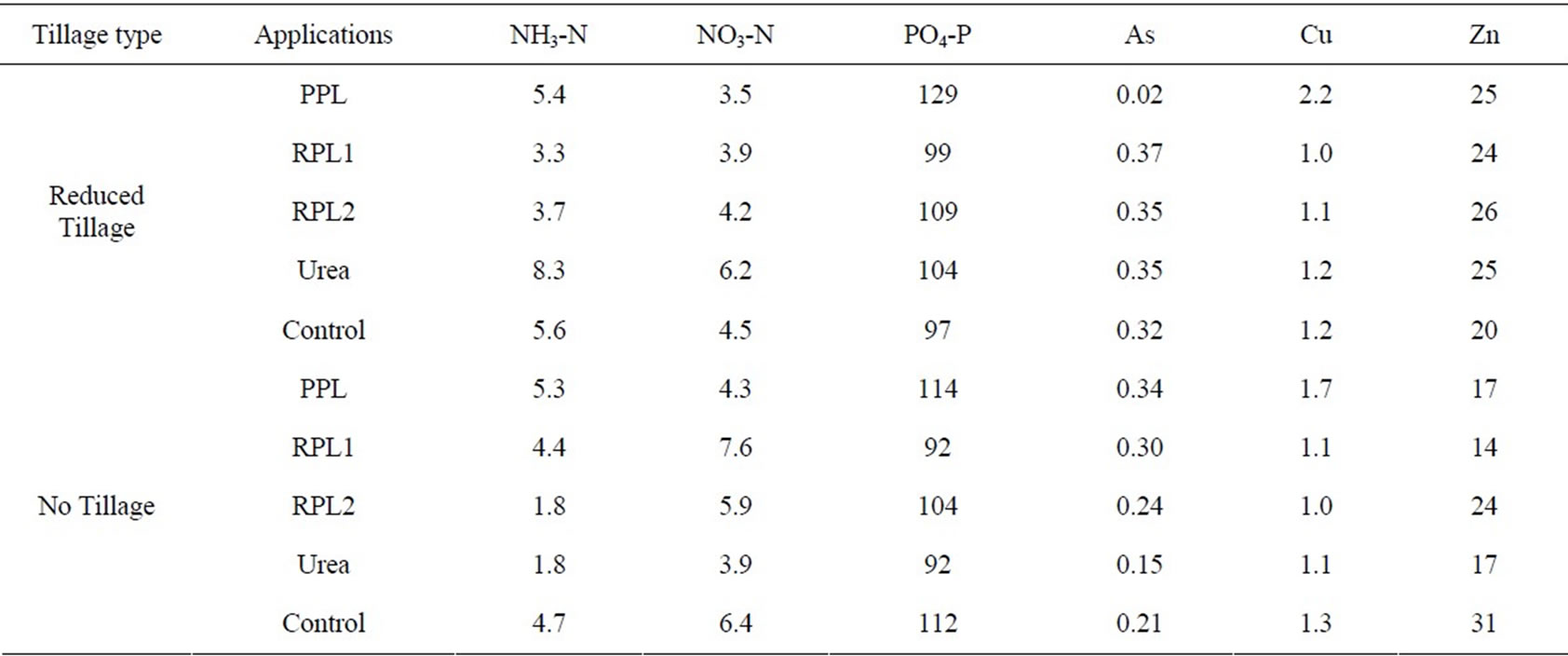
Table 3. Concentrations (mg/kg) of nutrients and trace elements in surface soils (0-5 cm) of the experimental plots prior to fertilizer or litter application.

Table 4. Mean runoff volumes (L), pH, total dissolved solids (TDS) corresponding to various treatments for the six storm events.
among the treatments. TDS values were significantly different (p ≤ 0.10, Table 4) among the treatments (Table 4). The pH values varied from 6.16 to 6.69 and the TDS ranged from 20 to 79 ppm.
3.2. Impact of Plot Treatments on Mass Exports of Nutrients and Trace Elements
Average mass exports and flow-weighted concentrations of nutrients and trace elements for the treatments are reported in Table 6. Mass exports for the individual events are presented in Figures 2-7. While NH4-N exports did not differ significantly (p ≥ 0.10) across the treatments (tillage × treatment), there were differences across the events among the treatments. The large events of May 10 and 13 produced the largest amounts of exports for all treatments. Ammonium-N exports were also slightly different between reduced and no-tillage practices. Under reduced tillage, exports were highest for the RPL2 (RPL2 = 35 Mg/ha) treatment for three (May 13,

Table 5. Correlations (Pearson’s) between mass exports of nutrients and trace elements and the rainfall amounts for the six events.
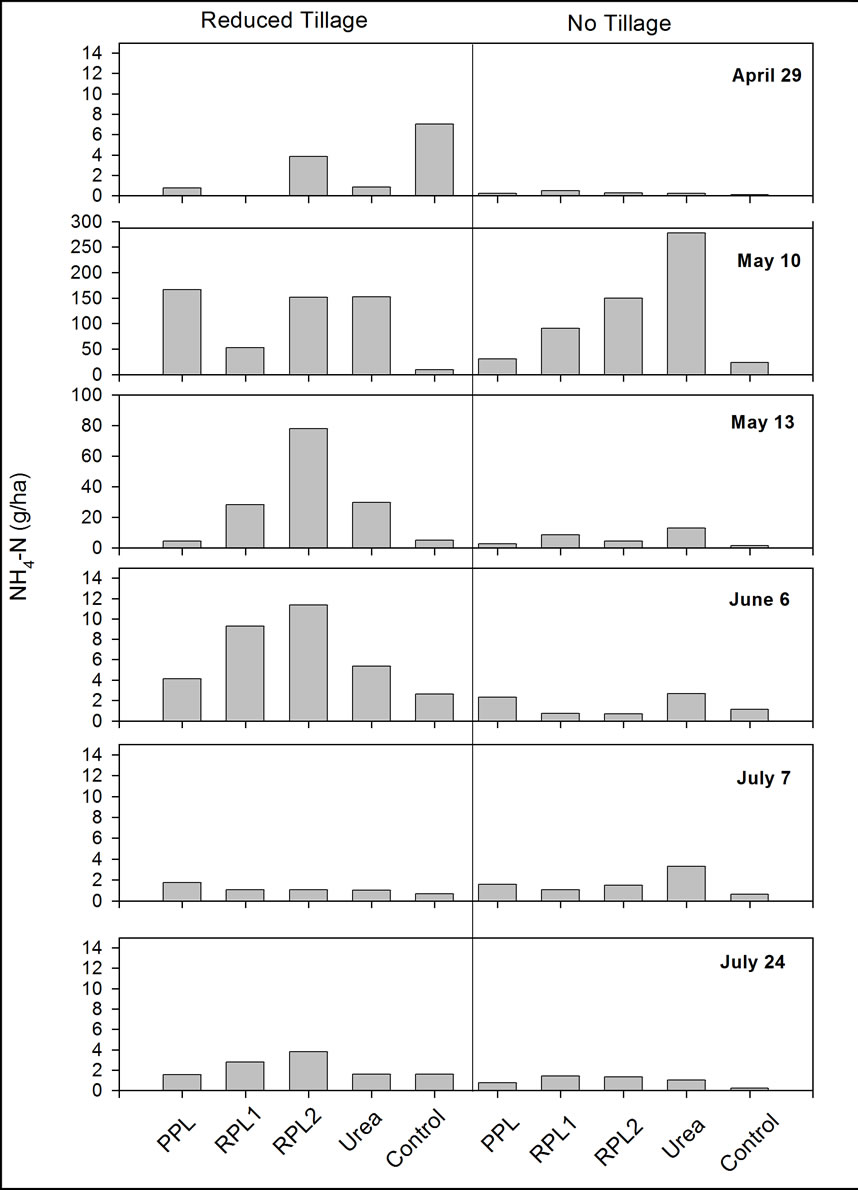
Figure 2. Average mass exports of NH4-N for the six storm events from the various treatments.
June 6 and July 24) of the six events (Figures 2-7). Exports from urea and RPL plots were higher than PPL treatments for most events except May 10 and July 7. For the large event of May 10, NH4-N export from the PPL plot was comparable to the exports from the RPL1 and RPL2 treatments. In contrast to reduced tillage, NH4-N exports from the no-tillage plots were highest from plots receiving urea for four (May 10, May 13, June 6 and July 7) of the six events. However, similar to reduced tillage, NH4-N exports in the no-tillage plot with PPL treatment

Figure 3. Average mass exports of NO3-N for the six storm events from the various treatments.
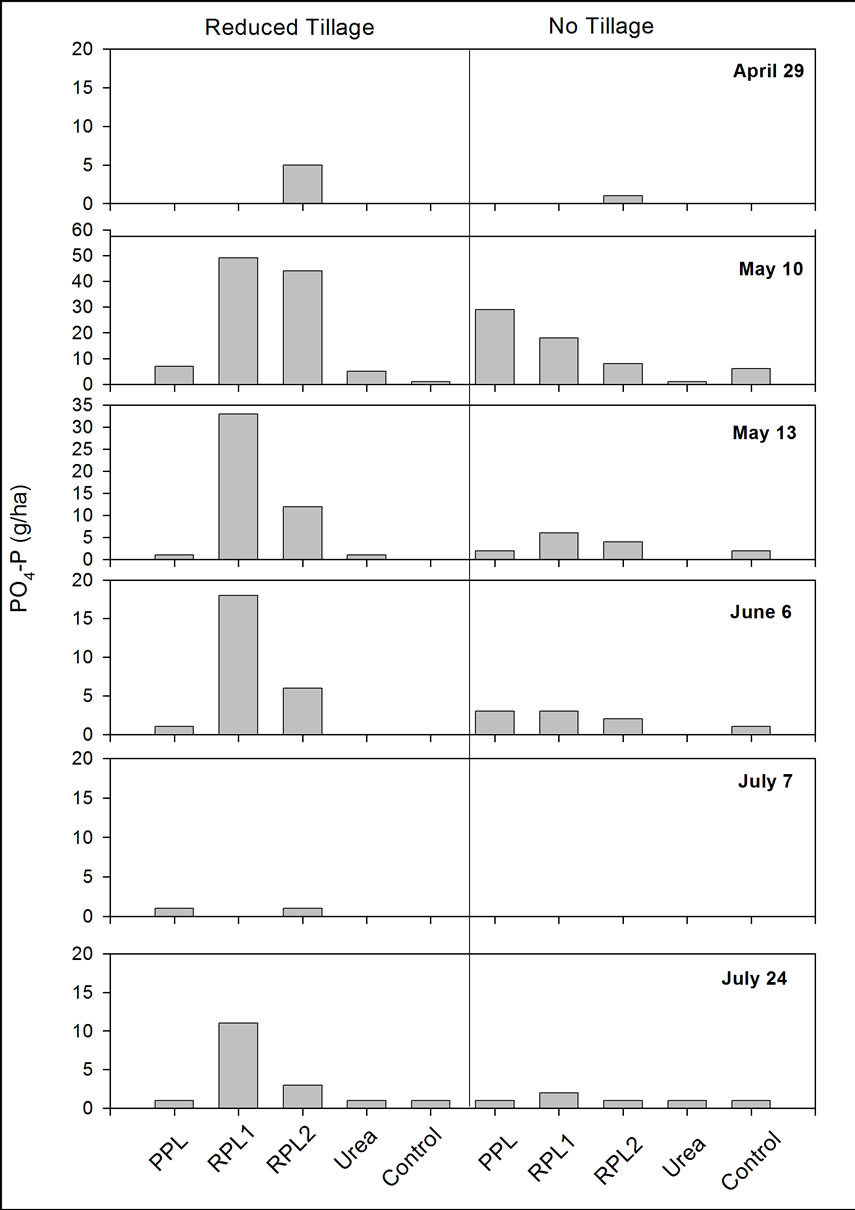
Figure 4. Average mass exports of PO4-P for the six storm events from the various treatments.
were again lower than the corresponding values from raw litter and urea treatments for five of the six events.
Similar to NH4-N, exports of NO3-N did not show any significant difference (p ≥ 0.1) among the treatment plots; but variations existed during events. Under reduced tillage, the highest exports of NO3-N were recorded for RPL2 and urea treatments for all events except the large event of May 10. Surprisingly, the large event of May 10 produced a large amount of NO3-N export from the plot receiving PPL application. In comparison, for the notillage practice, NO3-N exports decreased in order as Urea > RPL2 > RPL1 for four of the largest events (May 10, May 13, June 6 and July 24). Nitrate exports from the PPL treatment exceeded those from the RPL1, RPL2 and urea treatments for only the smallest event of July 7 for which the export amounts were very low. Except for the RPL2 treatment under no-tillage, the flow-weighted concentrations of NO3-N were less than 10 mg/L, which is within the safe limit of NO3-N concentration for drinking water [11].
For PO4-P, there were significant differences (p ≤ 0.1) in mass exports among some of the treatment plots (Table 6). Within reduced tillage, exports of PO4-P from PPL treatments were less than the raw litter treatments
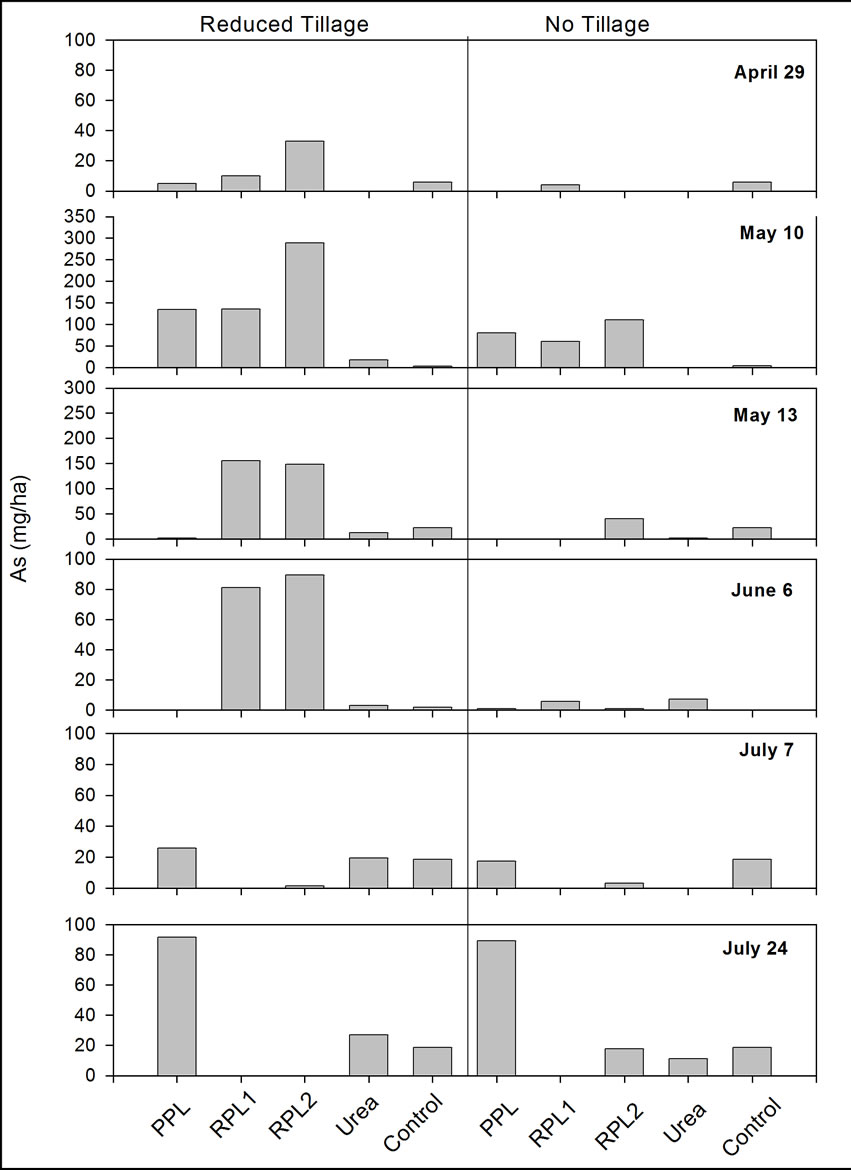
Figure 5. Average mass exports of As for the six storm events from the various treatments.
(RPL1 and RPL2) for the largest five out of the six events (Figures 2-7). While the raw litter treatments produced the largest exports of PO4-P it was surprising to note that the treatment with the lower application rate (RPL1) yielded greater PO4-P exports. Not surprisingly, the PO4-P exports from the urea treated plots were low or negligible since urea treatments did not contain any P. For the no-tillage practice, PO4-P exports from PPL were again lower than comparable exports from raw litter treatments with the exception of the large event of May 10. The large event of May 10 that occurred within a few days of litter application (21 days) resulted in a significant washout of PO4 with surface runoff for the no-tillage plots. The mean flow weighted concentrations of PO4-P (Table 6) in surface runoff from raw and pelletized litter treatments were fairly high and much greater than the threshold of 0.1 mg/L associated with eutrophication in water bodies [12].
In general, mass exports of trace elements (As, Cu, Zn) from the poultry treatments (PPL, RPL1, and RPL2) were higher from the reduced-tilled versus the no-tillage plots. The exports were significantly different (p ≤ 0.10) among some of the treatments (Table 6). With the exception of the two July events, exports of as from the PPL treatment under reduced tillage were less than the

Figure 6. Average mass exports of Cu for the six storm events from the various treatments.
corresponding values for the raw litter treatment (Figures 2-7). For no-tillage, the exports of As were low and did not reveal any consistent trend. Trace element exports from PPL and RPL were expected to be greater than urea treatments since urea application did not contain trace elements. Similar to the trend with As, exports of both Cu and Zn were higher from the raw litter plots versus the PPL plots under reduced tillage. Overall, mass exports of trace elements decreased in the order of RPL > PPL > urea under both tillage practices. The mean flow-weighted concentrations for As (Table 6) from the litter treatments exceeded the drinking water threshold of 0.01 mg/L [13]. In contrast, the corresponding values for Cu and Zn were less of a concern with most being much below the drinking water standards of 1 and 5 mg/L for Cu and Zn, respectively [14]. The average mass exports and flowweighted concentrations of DOC were much higher from the RPL treatments versus the PPL and urea treatments. The correlations between exports of DOC and nutrients and trace elements were also significant (Table 8).
3.3. Impact of Storm Events on the Mass Exports of Nutrients and Trace Elements
The large exports associated with the large event of May
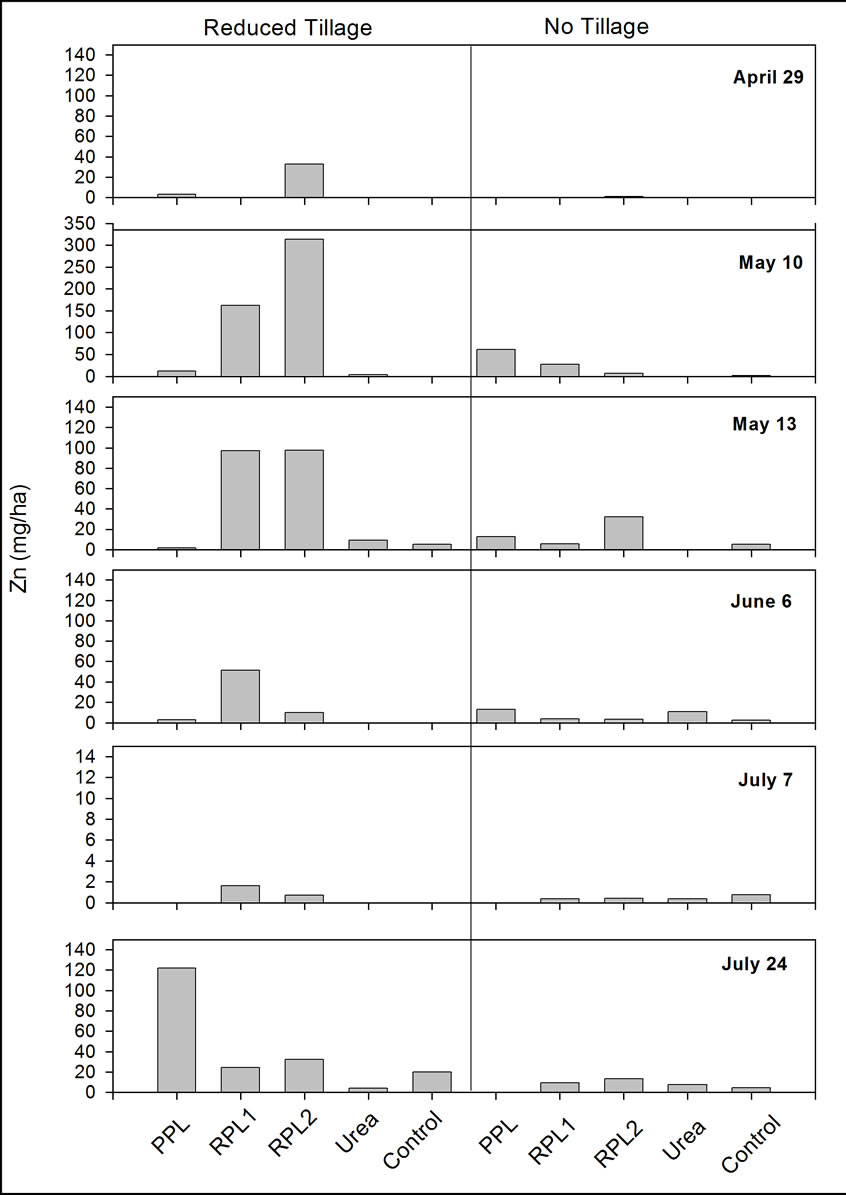
Figure 7. Average mass exports of Zn for the six storm events from the various treatments.
10 (event 2, Table 1 and Figures 2-7) clearly suggest that the size of the event was an important factor. Significant differences (p ≤ 0.10) were also obtained for mass exports of nutrients across the treatment plots at different events. Correlation analysis between rainfall amounts and mass exports of nutrients and trace elements (Table 5) indicated that 17 of the 30 values for reduced tillage and 12 of the 30 values for no-tillage were significantly correlated (p ≤ 0.10). Based on these correlations, it appears that rainfall had a slightly greater impact on mass exports from reduced-tilled plots. Among the correlations, the relationship between rainfall amount and mass export was weakest for NO3-N. In comparison to rainfall amounts, the correlation between mass exports and the timing of the event (number of days since litter application) was weak (Table 7). The exports decreased with time in most of the cases, but the decrease was not statistically significant (p ≥ 0.10). Even after 97 days of fertilizer/manure application (event of July 24), mass exports of nutrients and trace elements (As and Zn) were observed in the runoff water.
4. Discussion
In this section we systematically discuss each of the three

Table 6. Average mass exports (g/ha) and flow-weighted concentrations (mg/L; within parentheses) for the various treatments (tillage × fertilization).

Table 7. Correlation (Pearson’s) between mass exports of nutrients and trace elements and the time of occurrence of the event (days after litter application) for the six events.

Table 8. Correlation (Pearson’s) between mass exports of nutrients and trace elements and the mass exports of DOC in surface runoff.
questions we raised earlier in the Introduction section of this paper.
4.1. Impact of Litter Versus Urea on Water Quality
Overall, urea and RPL treatments yielded higher NH4-N exports than PPL for both reduced and no-tillage practices. While comparing inorganic fertilizer versus raw litter, Nichols et al. [5] found that NH4-N exports in surface runoff from plots receiving inorganic fertilizer (N-P-K mixture + ammonium nitrate) were greater than plots receiving poultry litter. The NH4-N exports were 3.7 and 2.1 kg/ha for surface-applied and incorporated (rotary tilled) conditions, respectively whereas corresponding values for poultry litter applications were 1.2 and 0.8 kg/ha. The larger exports of NH4-N from urea versus litter applications maybe associated with the greater solubility [15] and mineralization potential [16] of NH4-N derived from inorganic fertilizer as opposed to raw litter. Pelletized litter has been observed to take even longer time to mineralize compared to raw manure [17]. Similarly, NO3-N exports for RPL and urea treated plots were greater than values for PPL under both reduced and no-tillage. Nichols et al. [5] also reported higher NO3-N exports and concentrations from plots receiving inorganic fertilizer versus raw poultry litter. Smith et al. [18] also observed higher NO3-N concentration in runoff water from plots treated with urea as opposed to plots with raw poultry litter. The higher PO4-P exports from RPL and PPL treatments observed in our study were expected since urea treatments were not expected to contain any P.
Mass exports of trace elements were highest from plots treated with raw litter followed by PPL and urea treatments under both reduced and no-tillage management practices. This trend was not unexpected since our analyses (Table 2) indicated that raw litter had the highest concentrations of trace elements. A previous study by Sauer et al. [7] reported high trace-element exports of 97 and 26 g/ha for Cu and Zn, respectively from fescue grass plots receiving poultry litter application at the rate of 6.7 Mg/ha. In comparison to the values of Sauer et al. [7], the magnitude of our exports of trace elements is considerably lower. This may be due to the fact that Sauer et al. [7] recorded the mass exports one day after application whereas our first event occurred after a period of 11 days after litter application and the remaining events occurred over a four-month period. Adsorption to the soil particles or complexation with organic matter [19] may reduce the exports of Cu and Zn with surface runoff. Our observations also suggested that the exports of trace elements were strongly correlated with DOC. The elevated exports of DOC from the raw litter plots (especially under reduced tillage, Table 6) would also explain the elevated exports of trace elements from these treatments.
4.2. Influence of Tillage (Reduced Versus No-Tillage) on Water Quality
When tillage practices are compared, they appear to have the great impact on the exports of NH4-N, NO3-N, PO4-P and the trace elements. We found higher NH4-N exports from the reduced-tilled plots for four of the six events. We believe this may be associated with the history of conventional tillage for our reduced tillage plots. Prior to 2008, these plots were tilled twice a year and may have likely developed an impermeable layer below the tillage depth which may consequently have enhanced the runoff potential for these plots [20]. Elevated exports from conventionally-tilled plots have previously been reported by Seta et al. [21] who reported 57% less NH4-N loss from no-tillage plots versus plots with conventional tillage. They attributed this difference in NH4-N exports to the higher amount of runoff and sediment loss from the conventionally-tilled plots. Similarly, Nichols et al. [5] also reported higher PO4-P exports from rotary tilled plots versus plots with surface application for both inorganic fertilizer and manure treatments. Phosphate exports from inorganic fertilizer application were 2.6 and 1.8 kg/ha for tilled and no-tilled conditions, respectively, whereas the corresponding values for manure were 0.9 and 0.8 kg/ha.
Interestingly, in our study, the mass exports of trace elements were higher from the reduced-tillage versus the no-tillage plots. This trend was applicable across of the events and treatments. Previous studies have reported an increase in concentrations of As in soil [22-24] as well as runoff waters [25,26] as a result of application of raw poultry litter. However, not much work has been conducted to investigate the impact of tillage practices on trace element exports from plots receiving poultry litter.
4.3. Impact of Storm Events on Water Quality
Our results clearly suggest that rainfall amounts influenced the mass exports. Correlations between rainfall amounts and mass exports were strongest for PO4-P and trace elements, followed by NH4-N and weakest for NO3-N (Table 5). Similar observations have been reported in previous studies. Edwards and Daniel [3] found that the exports of NH4-N increased from 16.2 to 42.1 kg/ha when the simulated rainfall intensity was increased from 5 cm/h to 10 cm/h. They also reported a similar increase in PO4-P exports for the same level of increase in rainfall intensity. But, in contrast, rainfall intensity did not have any effect on the exports of NO3-N due to infiltration.
We did not find any correlation between the mass exports of nutrients and metals and the timing of the events (days since application of litter). This suggests that concentrations of nutrients or trace elements in runoff did not necessarily decrease or change with time. This result is in contrast with other studies that have found a decrease in NH4-N concentrations with time since application [6,7,27]. The decrease in NH4-N exports was attributed to the loss of NH4-N to volatilization, uptake by plants and microorganisms, and oxidation to nitrate. However, as opposed to our study, the studies of Sauer et al. [7] and Sharpley [27] were conducted over a short period of time (1-15 days), received the same amount of simulated rainfall which resulted in almost the same amount of runoff per event. Pierson et al. [6] reported that dissolved reactive P concentrations decreased linearly with a natural logarithm of time for a study that extended over a period of two years. Sauer et al. [7] also observed a decrease in SRP exports at 14 versus 1 day from plots receiving applications of poultry litter. However, we observed increase in NH4-N exports from reduced tilled RPL plots in late events like June 6.
Previous studies investigating the influence of time on exports of trace elements have yielded mixed results. Moore et al. [26] evaluated pasture subjected to poultry litter applications and found that the export of Cu in surface runoff on the seventh day was less than that recorded after the first day of litter application. However, the same pattern did not extend to Zn, where the export on the 7th day was greater than that recorded for the first day after application.
5. Conclusions
Overall, this study suggests that the potential for exports of nutrients (NH4-N, NO3-N, PO4-P) from plots receiving pelletized litter is less than that from raw litter and urea. These results suggest that PPL may be a more environmentally-sound and viable alternative to urea. While the exports of trace elements from PPL were greater than urea, they were still very low and less than the values recorded for raw poultry litter. Thus, among the litter forms, PPL appears to be a better choice to reduce the level of trace elements in surface runoff. Our results also suggest no-tillage management practice can further improve runoff water quality.
6. Acknowledgements
Funding for this study was provided through a USDA Conservation Innovation Grant (CIG) and a fellowship to Sudarshan Dutta by the Institute of Soil and Environmental Quality (ISEQ) and the Avian Bioscience Center (ABC) at the University of Delaware. We would like to thank the St. Andrews School at Middletown, Delaware and the farmers for providing access to the agricultural plots. We would also like to recognize the support of Nathan Kiracofe, Dr. Jim Glancey, Nina Finger and Amit Katiyar with experimental plot setup and sampling.
REFERENCES
- M. E. Lόpez-Mosquera, F. Cabaleiro, M. J. Sainz, A. Lόpez-Fabal and E. Carral, “Fertilizing Value of Broiler Litter: Effects of Drying and Pelletizing,” Bioresource Technology, vol. 99, no. 13, September 2008, pp. 5626- 5633.
- J. T. Sims and D. C. Wolf, “Poultry Waste Management: Agricultural and Environmental Issues,” Advances in Agronomy, vol. 52, 1994, pp. 1-82.
- D. R. Edwards and T. C. Daniel, “Effects of Poultry Litter Application Rate and Rainfall Intensity on Quality of Runoff from Fescuegrass Plots,” Journal of Environmental Quality, vol. 22, no. 2, April 1993, pp. 361-365.
- B. E. Haggard, P. B. DeLaune, D. R. Smith and P. A. Moore, “Nutrient and β17-Estradiol Loss in Runoff Water from Poultry Litters,” Journal of the American Water Resources Association, vol. 41, no. 2, April 2005, pp. 245-256.
- D. J. Nichols, T. C. Daniel and D. R. Edwards, “Nutrient Runoff from Pasture after Incorporation of Poultry Litter or Inorganic Fertilizer,” Soil Science Society of America Journal, vol. 58, no. 4, July 1994, pp. 1224-1228.
- S. T. Pierson, M. L. Cabrera, G. K. Evanylo, H. A. Kuykendall, C. S. Hoveland, M. A. McCann and L. T. West, “Phosphorus and Ammonium Concentrations in Surface Runoff from Grasslands Fertilized with Broiler Litter,” Journal of Environmental Quality, vol. 30, no. 5, September 2001, pp. 1784-1789.
- T. J. Sauer, T. C. Daniel, P. A. Moore, K. P. Coffey, D. J. Nichols and C. P. West, “Poultry Litter and Grazing Animal Waste Effects on Runoff Water Quality,” Journal of Environmental Quality, vol. 28, no. 3, May 1999, pp. 860-865.
- United States Department of Agriculture, Official Soil Series Description, Washington, D.C., 2004. http://ortho. ftw.nrcs.usda.gov/cgi-bin/osd/osdname.cgi
- United States Department of Agriculture Soil Conservation Service and Delaware Agricultural Experiment Station, “Soil Survey, New Castle County, Delaware,” October 1970, pp. 92-94.
- Delaware Environmental Observing System, “Current Conditions Data Retrieval: Townsend 2008,” 2008. http://www.deos.udel.edu/current_retrieval.html
- United States Environmental Protection Agency, “Consumer Factsheet on: Nitrates/Nitrites,” Washington, D.C., 1992. http://www.epa.gov/safewater/dwh/c-ioc/nitrates.html
- North Carolina State University Water Quality Group, “Phosphorous,” 2003. http://www.water.ncsu.edu/water shedss/info/phos.html
- United States Environmental Protection Agency, “Arsenic in Drinking Water: Basic information,” Washington, D.C., 1992. http://www.epa.gov/safewater/arsenic/basic information.html
- United States Environmental Protection Agency, “Secondary Drinking Water Regulations: Guidance for Nuisance Chemicals,” Washington, D.C., 1992. http://www. epa.gov/safewater/consumer/2ndstandards.html
- D. H. Franklin, M. L. Cabrera and V. H. Calvert, “Fertilizer Source and Soil Aeration Effects on Runoff Volume and Quality,” Soil Science Society of America Journal, vol. 70, no. 1, January 2006, pp. 84-89.
- F. C. Thornton, N. J. Surpali, B. R. Bock and K. C. Reddy, “N2O and NO Emissions from Poultry Litter and Urea Applications to Bermuda Grass,” Atmospheric Environment, vol. 32, no. 9, May 1998, pp. 1623-1630.
- C. M. Hamilton and J. T. Sims, “Nitrogen and Phosphorous Availability in Enriched, Palletized Poultry Litters,” Journal of Sustainable Agriculture, vol. 5, no. 3, June 1995, pp. 115-132.
- D. R. Smith, P. R. Owens, A. B. Leytem and E. A. Warnemuende, “Nutrient Losses from Manure and Fertilizer Applications as Impacted by Time to First Runoff Event,” Environmental Pollution, vol. 147, no. 1, May 2007, pp. 131-137.
- E. H. Brock, Q. M. Ketterings and M. McBride, “Copper and Zinc Accumulation in Poultry and Dairy Manure-Amended Soil,” Soil Science, vol. 171, no. 5, May 2006, pp. 388-399.
- R. Lal. “No-tillage Effects on Soil Properties under Different Crops in Western Nigeria,” Soil Science Society of America Journal, vol. 40, no. 5, September 1976, pp. 762-768.
- A. K. Seta, R. L. Belvins, W. W. Frye and B. J. Barfield, “Reducing Soil Erosion and Agricultural Chemical Losses with Conservation Tillage,” Journal of Environmental Quality, vol. 22, no. 4, October 1993, pp. 661- 665.
- A. Adeli, K. R. Sistani, H. Tewolde and D. E. Rowe, “Broiler Litter Application Effects on Selected Trace Elements under Conventional and No-till Systems,” Soil Science, vol. 172, no. 5, May 2007, pp. 349-365.
- E. E. Codling, R. L. Chaney and C. L. Mulchi, “Effects of Broiler Litter Management Practices on Phosphorus, Copper, Zinc, Manganese and Arsenic Concentrations in Maryland Coastal Plain Soils,” Communications in Soil Science and Plant Analysis, vol. 39, no. 7-8, April 2008, pp. 1193-1205.
- W. L. Kingery, C. W. Wood, D. P. Delaney, J. C. Williams and G. L. Mullins, “Impact of Long-Term Land Application of Broiler Litter on Environmentally Related Soil Properties,” Journal of Environmental Quality, vol. 23, no. 1, January 1994, pp. 139-147.
- N. S. Bolan, D. C. Adriano and S. Mahimairaja, “Distribution and Bioavailability of Trace Elements in Livestock and Poultry Manure By-Products,” Critical Reviews in Environmental Science and Technology, vol. 34, no. 3, May 2004, pp. 291-338.
- P. A. Moore, T. C. Daniel, J. T. Gilmour, B. R. Shreve, D. R. Edwards and B. H. Wood, “Decreasing Metal Runoff from Poultry Litter with Aluminum Sulfate,” Journal of Environmental Quality, vol. 27, no. 1, January 1998. pp. 92-99.
- A. N. Sharpley, “Rainfall Frequency and Nitrogen and Phosphorous Runoff from Soils Amended with Poultry Litter,” Journal of Environmental Quality, vol. 26, no. 4, July 1997, pp. 1127-1132.

